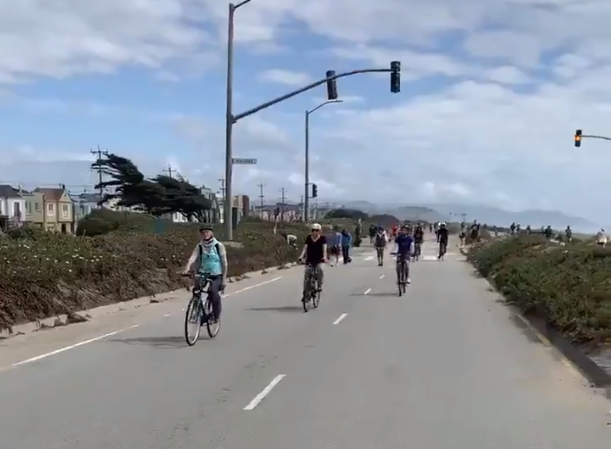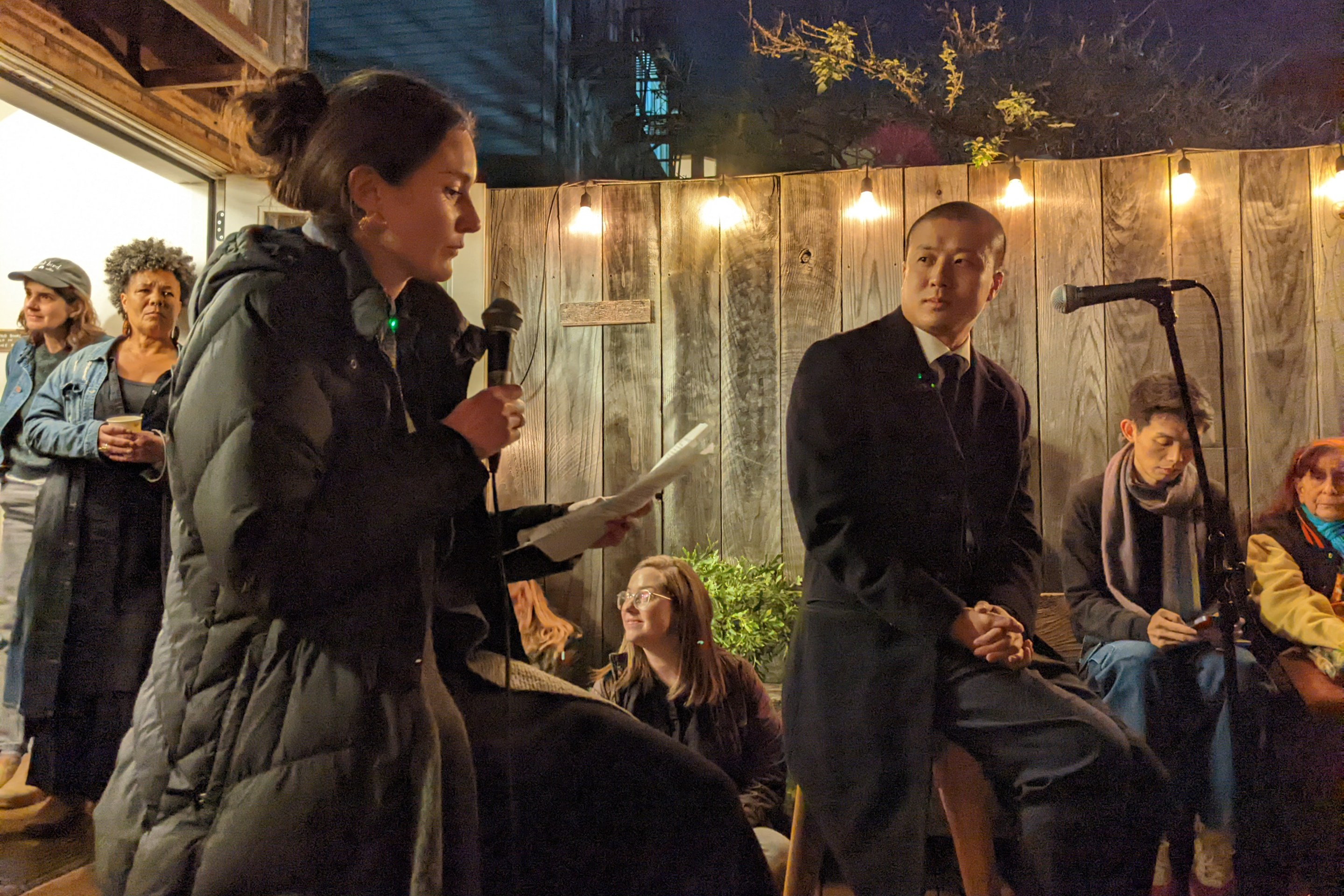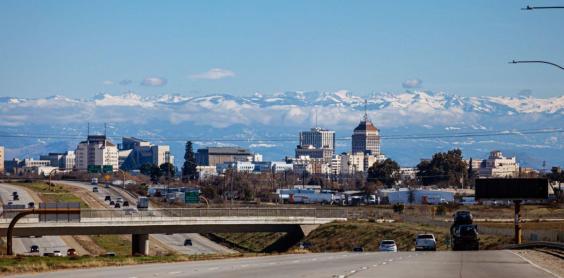Note: GJEL Accident Attorneys regularly sponsors coverage on Streetsblog San Francisco and Streetsblog California. Unless noted in the story, GJEL Accident Attorneys is not consulted for the content or editorial direction of the sponsored content.
Advocates on both sides of the Bay made significant progress Tuesday in San Francisco and Oakland.
First, the San Francisco Board of Supervisors voted 9 to 2 to preserve the Great Highway Park's current hours.
Despite a last-minute motion by Supervisors Myrna Melgar and Connie Chan to cut Fridays from the Great Highway Park, the present compromise was preserved. That means motorists are permitted to use the highway four days a week plus Friday mornings. Friday afternoons and for the rest of the weekend, the road will be closed to cars and accessible to cyclists and pedestrians, as is the status quo. Luke Bornheimer, an organizer and advocate for the car-free JFK Promenade and the Great Highway Park, sums it up:
Today’s vote by the Board of Supervisors to approve Supervisor Mar’s Great Highway Park legislation is historic and lays the foundation for Great Highway Park to eventually become a 24/7 world-renowned oceanfront park. The Mayor and Board of Supervisors should be doing everything in their power to support the creation of a 24/7 Great Highway Park before the end of the Great Highway pilot in December 2025.
Great Highway Park has been a massive success since it was created by Supervisor Mar and city staff in April 2020, with roughly 3 million visits by San Franciscans and tourists since then. Great Highway Park is an invaluable resource for residents of the “Westside”—Districts 1, 4, and 7—as well as countless families, seniors, and people with disabilities in the Bay Area and beyond.
Great Highway Park has become a community space that simultaneously helps our city take action to address climate change and make it safer for people to get around our city riding bikes or using other mobility devices. It’s also giving San Franciscans a safe space to improve their well-being, connect with friends/neighbors, and enjoy our oceanfront, and has allowed countless children and people of all ages to learn to ride bikes and mobility devices, which helps reduce car trips, carbon emissions, and noise pollution while making our city safer and more livable.
Despite efforts by opponents to spread disinformation claims about traffic congestion and safety—all of which have been proven false—the vast majority of San Franciscans support Great Highway Park, as shown by Proposition I’s overwhelming defeat 65% to 35% one month ago. People love Great Highway Park!
"We are so excited the Great Highway pilot program for 2023-2025 was just approved by the board of supervisors with great leadership from Supervisor Mar on bringing this ordinance through. This is an excellent step forward to meeting our city's climate goals and allows us to work towards having a permanently car-free Great Highway in the near future," wrote Rachel Clyde, Community Organizer for the San Francisco Bicycle Coalition.
Second, the SFMTA Board unanimously voted to make sixteen Slow Streets permanent and to expand the program into a citywide network.
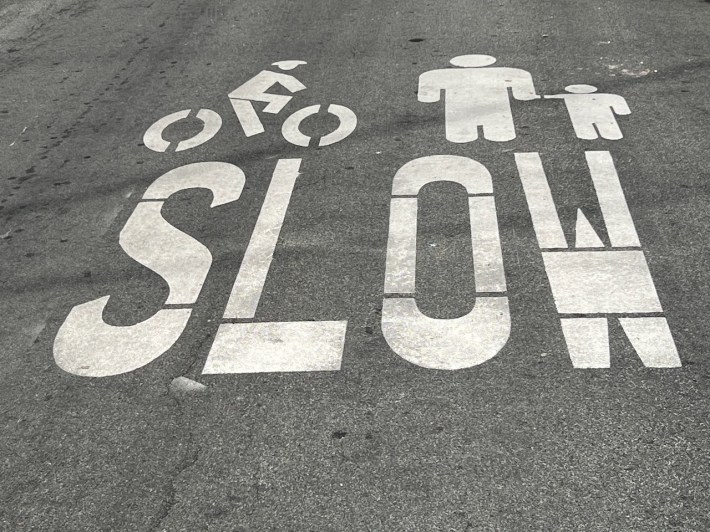
After over a hundred speakers commented at a meeting that stretched well into the night, the SFMTA Board of Directors voted unanimously to make sixteen streets into permanent "Slow Streets." And, significantly, Lake Street was put back on the Slow Streets list. This makes permanent something that started in the midst of the COVID pandemic. Public comment continued from the afternoon until 9:30 p.m., with another hour of discussion among the SFMTA Board members. Director Steve Heminger motioned to return Lake Street to the list. "Lake was the second highest bike use of the slow streets," he said, and experienced a 36 percent reduction in collisions. "I conclude that Slow Lake has worked and should continue." Amanda Eaken and Manny Yekutiel pushed amendments to lower speed limits from 20 to 15 mph and to make sure SFMTA continues working on linking and expanding Slow Streets, including connecting them to streets with protected bike lanes, to eventually create a coherent network of safe bike routes across the city.
The vote came after a contentious battle between safety advocates versus blue T-shirted drivers who wanted to forever preserve their perceived right to drive anywhere and everywhere at speed, unencumbered by other road users. Lake Street was especially contentious. Drivers repeated the lie, almost to a person, that making Lake Street a "Slow" street means cars are banned. Of course, that isn't even close to true--drivers simply aren't permitted to go fast or use the street as a cut-through to avoid traffic on nearby arterials such as Geary. Many claimed Lake Street traffic has now diverted to California, which the board seized on as an argument for adding more calming features on California, rather than destroying Slow Lake.
"They’re enraged this Board decided last August that the Richmond now has 22 East/West lanes dedicated to prioritizing private auto traffic instead of 24," said advocate Zach Lipton, one of the speakers at the meeting, about the members of the public who insist that cars be allowed to drive at speed down the length of Lake Street.
This data visualization by @braitsch is just phenomenal. Basic Slow Street treatments can be installed by SFMTA in a single day and almost instantly reduce crashes. Just look at what this meant for Cabrillo. 13 crashes before, only 2 since. https://t.co/7rgJTMjLuh pic.twitter.com/lyqVowceJl
— Parker Day (@desertflyer) December 6, 2022
Director Gwyneth Borden corrected the many blue shirts who claimed streets "were made for cars." No, streets came before cars and were used by horses, pedestrians, cyclists, and streetcars long before cars were in widespread use; they were completely taken over by motorists over time, she said. The Slow Streets program is an effort to take some of it back so streets can be shared--safely--by all who wish to use them, as has been done in other countries.
"The SFMTA Board's decision to adopt so many permanent Slow Streets today is a huge success for active and alternative transportation in San Francisco. Now, we will have a start of low-stress street networks that create safe passageways for people biking, walking, and rolling. We look forward to continuing to advocate for more Slow Streets, especially in our city's densest neighborhoods and in the southeast where desired by local communities," wrote Justin Hu-Nguyen, Director of Advocacy at the San Francisco Bicycle Coalition, in a statement.
And last, but certainly not least, Oakland fire codes prevented from wrecking safe streets
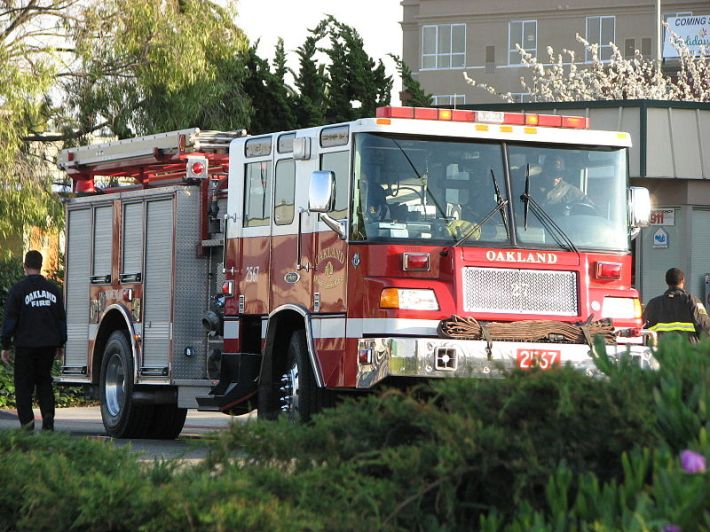
Meanwhile, over in Oakland, the City Council voted five "yes" (with three abstentions) to remove a section of the updated fire code that would require 26 feet of unobstructed street space next to tall buildings. This would have been a problem because it means that widening sidewalks or adding protected bike lanes on streets with tall buildings would have been all but impossible, or at least subject to fire department veto.
From a document prepared by advocates that cites fire codes from other cities: "Narrow lanes work well with properly chosen fire trucks. Ladder trucks and pumper trucks can both be chosen to work with lanes that are more narrow. European and Japanese trucks are designed for narrow streets. Many fire departments, including Portland and Madera County, have purchased Rosenbauer Aerial Raptors, which can work on narrower streets."
But Felicia Bryant, the fire marshal for Oakland, said reducing that 26-foot requirement means they can't "deploy a 100-foot ladder." Members of the city council wanted to know why other city fire departments, which also have tall buildings, are able to cope with tighter street dimensions. Bryant didn't have an answer. Others pointed out that the wide streets of Oakland encourage speeding, which leads to crashes and deaths. Bryant replied that "the intent of the fire code is not to look at speeding" and that the road widths have been in place for some time.
Councilperson Rebecca Kaplan took umbrage at that, saying that "our road widths are a failure. The fact that they've been in place does not mean it's a success." She pointed out that the fire department can look at equipment that can function within narrower streets, as other cities have done.
Ultimately, the council opted to send the width requirements to the Public Safety Committee so they can be reviewed with an eye on facilitating firefighter response and preventing additional crashes on streets.
